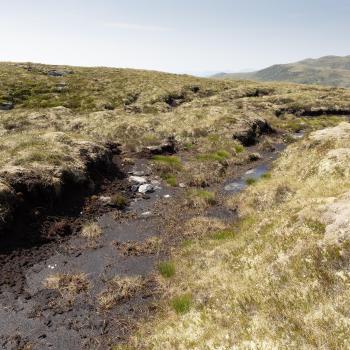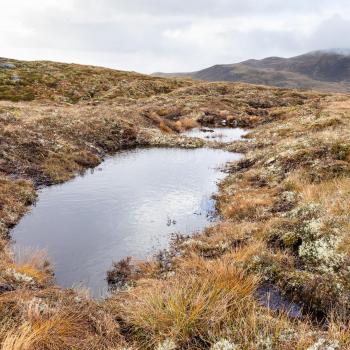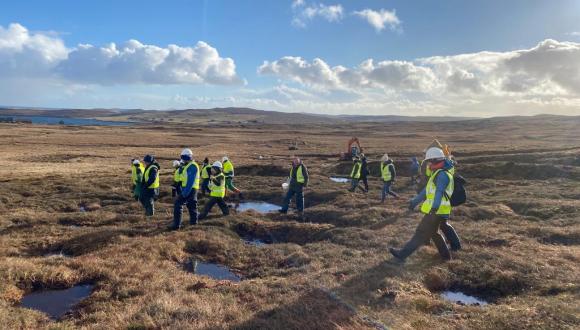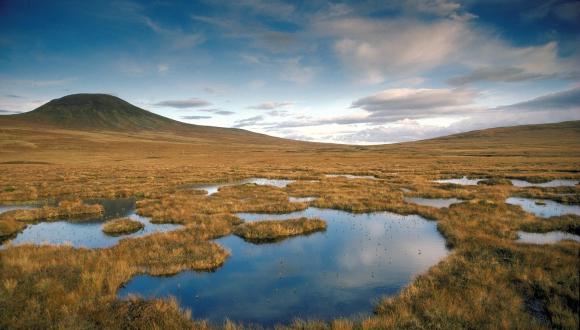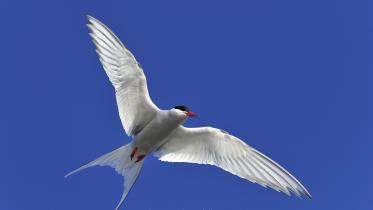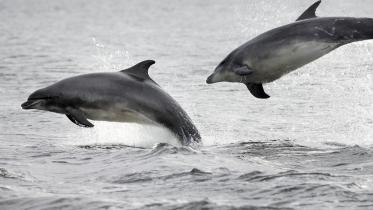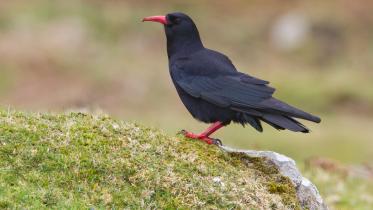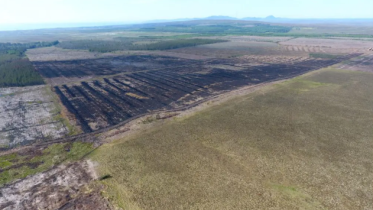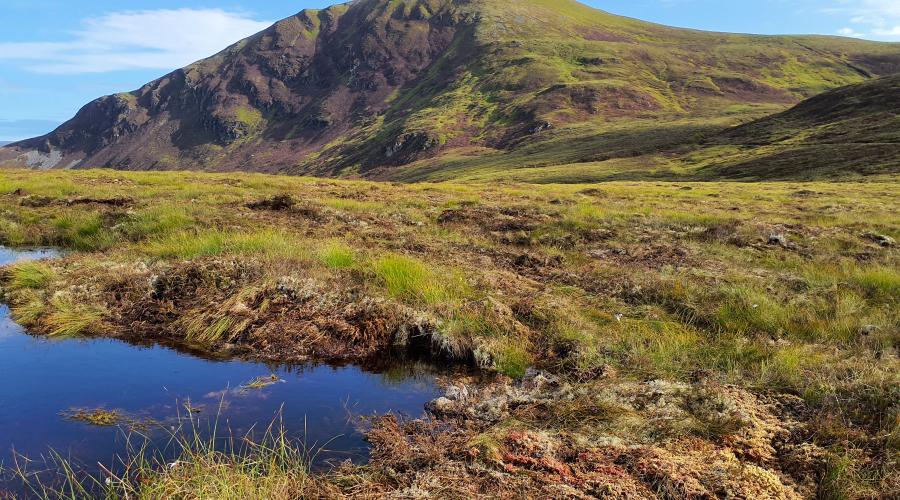
Peatland ACTION case study: What’s the connection between peat and landscape-scale restoration?
(Ben Wyvis National Nature Reserve)
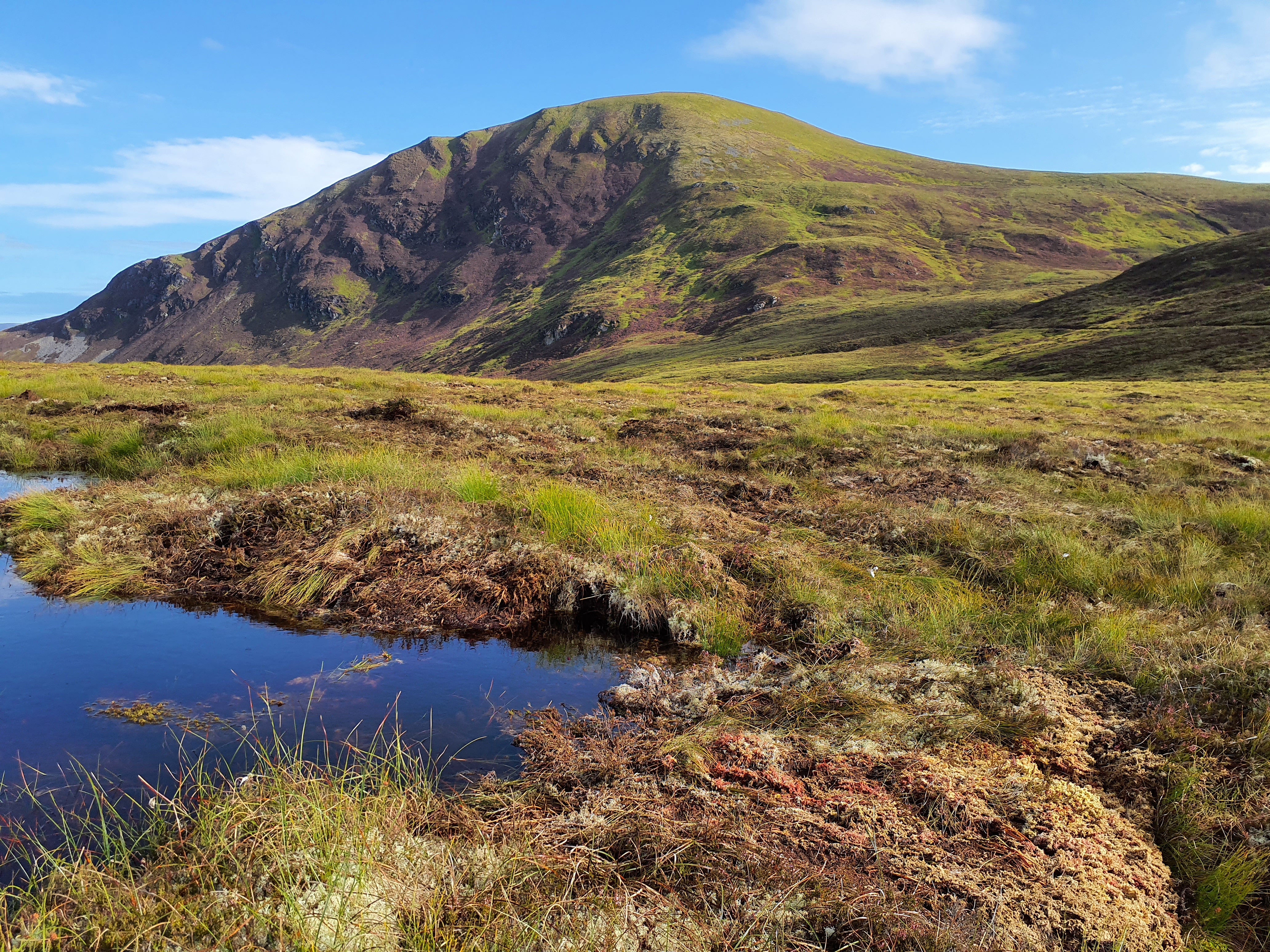
What’s the connection between peat and landscape-scale restoration?
The answer lies in a multi funding stream approach to whole catchment restoration along the River Peffery corridor.
Ben Wyvis National Nature Reserve
The two phases of peatland restoration work on Ben Wyvis National Nature Reserve (NNR) have not only put nearly 340 hectares of peatlands on the road to recovery, but have contributed to much wider, landscape-scale benefits to the whole river catchment in which it sits, and the communities it serves.
Along with a forest-to-bog project managed by Forestry & Land Scotland on land adjacent to the NNR, peatland restoration at Ben Wyvis will help regulate the flow of water downstream, as well as improving water quality. Links have been made with a Nature Restoration Fund project to re-meander the River Peffery, which will help reduce flooding in communities downstream, as well as improving the biodiversity of the river - a win-win story for people and wildlife.
The project
Ben Wyvis NNR is a very special place for wildlife, and has been designated as a Site of Special Scientific Interest (SSSI) and a Special Area of Conservation (SAC) because some of the species and habitats here are nationally and internationally important. For example, dwarf birch is a nationally scarce species that in Scotland is only found in scattered populations in the Highlands.
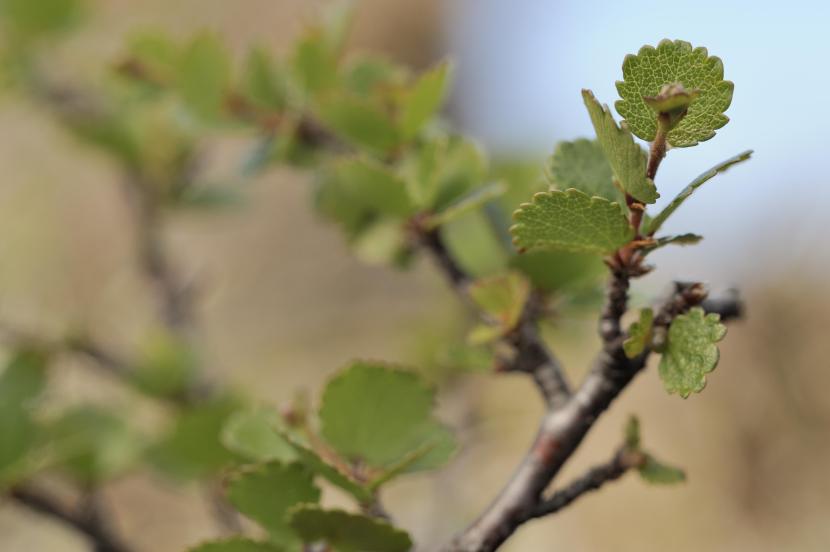
This peatland restoration project was funded by NatureScot Peatland ACTION.
Credit: LorneGill/NatureScot/2020Vision
Dwarf birch used to be much more widespread but has declined because of pressures such as overgrazing. At Ben Wyvis, the species is thriving, and peatland restoration combined with low deer numbers will help to ensure its continued protection.
Peatland restoration at Ben Wyvis
Ben Wyvis sits at the very top of the River Peffery catchment, and land within the site is the source of the river. The Allt Coire nam Bo Dubha flows out of the restoration site, turning into the Allt Dearg, before becoming the River Peffery, which enters the sea at Dingwall.
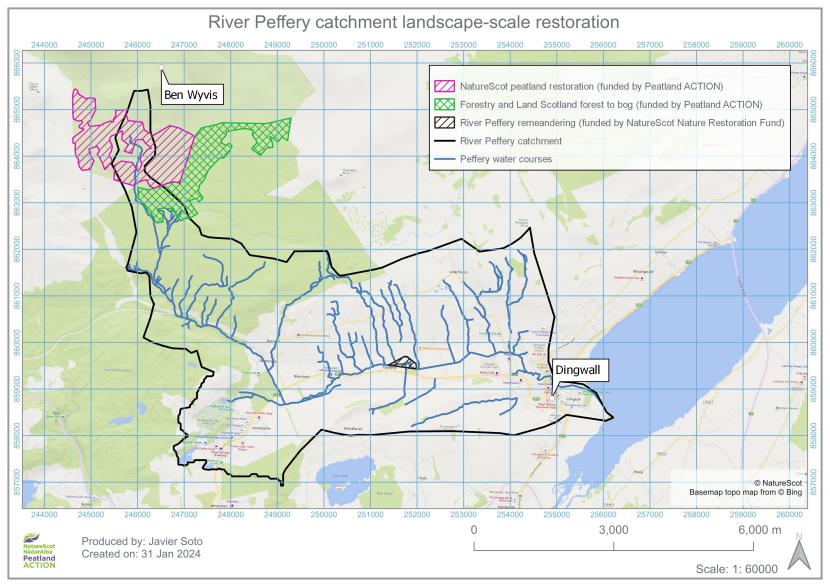
Three restoration projects work together to help restore habitat within the River Peffery catchment.
Peatland restoration area at the headwaters of the River Peffery catchment - funded by NatureScot Peatland ACTION.
Forestry & Land Scotland forest-to-bog restoration restoration area at the headwaters of the River Peffery catchment - funded by FLS Peatland ACTION.
River Peffery remeandering project in the lowland corridor of the catchment near Fodderty (a small hamlet, close to Dingwall on the coast) - funded by NatureScot Nature Restoration Fund
This case study focusses on Phase 2 of the project, which covered 239 hectares of damaged peatland on Ben Wyvis NNR. Phase 1 was completed in early 2023, and covered a further 108 hectares.
The area contained some heavily eroded hags and gullies, with micro-erosion, moorland drains and small peat pans adding to the damage. Blanket bog vegetation found near to these areas showed the bog was drying out, putting species like dwarf birch at risk. Many of the hags and gullies had bare peat and eroding edges, pointing to the fact that the peat was being continually eroded by wind, water and frost on this extremely exposed site.
Albamontane, the contractors, used four excavators, working for a total of 220 days, to carry out the restoration work. They blocked drains and gullies, and hags created peat bunds to block and reprofile the hags.
Ben Wyvis peatland restoration - The people working together
Met some of the people who helped make the restoration projects at Ben Wyvis and the River Peffery a reality.
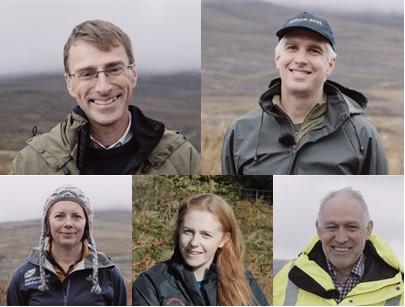
Clockwise from top left: Richard Lockett (River Peffery Restoration Project); Ian Sargent (NatureScot Site Manager); Tim Cockerill (Forestry & Land Scotland Peatland Restoration Forester), Rachel Urquhart (Albamontane); and Julia Stubbs-Partridge (Peatland ACTION NatureScot Project Officer).
Credit: Swift Films / Peatland ACTION NatureScot
Downstream from Ben Wyvis National Nature Reserve is the River Peffery Restoration Project. Led by local environmental consultant Richard Lockett, this exciting scheme, supported through NatureScot’s Nature Restoration Fund (NRF), is remeandering a section of the River Peffery, planting new woodlands next to the river, and creating new floodplain habitat.
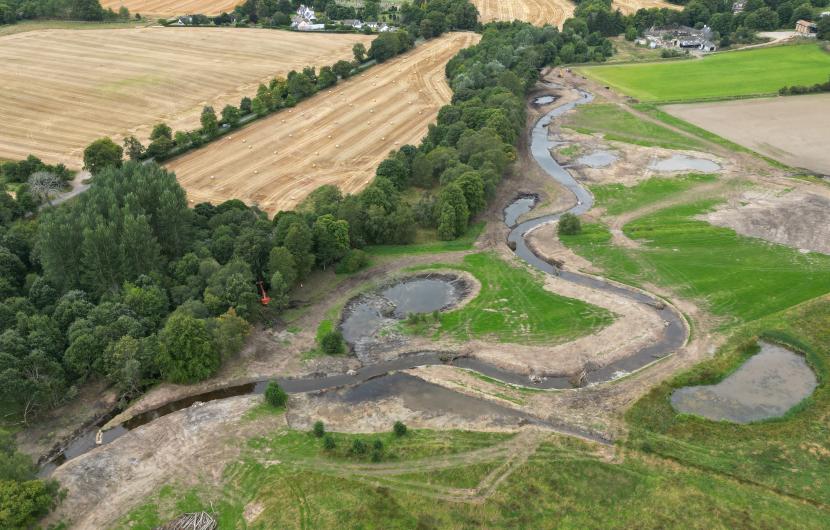
Aerial image of the River Peffery after remeandering work was carried out by the River Peffery Restoration Project.
This restoration project was supported through NatureScot’s Nature Restoration Fund (NRF).
Credit: CR Contracting Ltd.
Ben Wyvis peatland restoration - The benefits of peatland restoration
By slowing the water running off the blanket bog, the peatland restoration will help this Nature Restoration Fund project achieve its aims of using natural flood management techniques to reduce flooding in Dingwall and other communities in the catchment.
The restoration work that Forestry & Land Scotland has carried out through its own Peatland ACTION funded forest-to bog restoration on the adjacent land also contributes to the landscape-scale success of these schemes. It has the added benefits of reducing the possibility of non-native trees re-establishing on the National Nature Reserve through reseeding, and improving the conditions for ground nesting birds on the blanket bog.
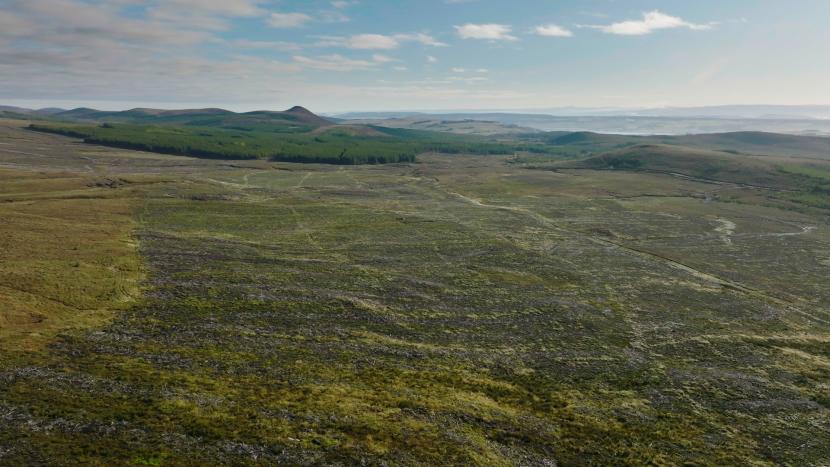
Forestry & Land Scotland carried out vital peatland restoration work on 250 hectares of previously afforested blanket bog next to the National Nature Reserve
©Swift Films/NatureScot
With the permission of the landowner on the adjacent Little Wyvis Estate the peatland restoration project was able to block a particularly large artificial drain that fed into the Allt Coire nam Bo Dubha, a tributary of the River Peffery. Blocking this large drain, together with the smaller drains running into it, will help restore natural hydrological function and reduce peak storm discharges. This is bringing potential benefits to not only the biodiversity of the whole catchment, but also increasing its capacity as a carbon store, reducing flood risks, and improving the water quality of the river and its tributaries.
For further information, or to get involved with Peatland ACTION
- We offer funding for suitable peatland restoration projects across Scotland
- We offer, where appropriate, multi-year funding
- We fund up to 100% of the capital costs
- We fund much of the pre-application work, for example, peat depth surveys and feasibility studies
- We have officers who can help design your project, offer advice on restoration management and assist you to complete your application and supporting information.
Peatland ACTION case studies: We demonstrate links between peat condition and: fisheries; grouse; carbon storage; wildlife; landscapes; human history; and so much more.
If you would like to contribute to the on-going work of Peatland ACTION please contact [email protected].
For further information: www.nature.scot/peatlandaction


